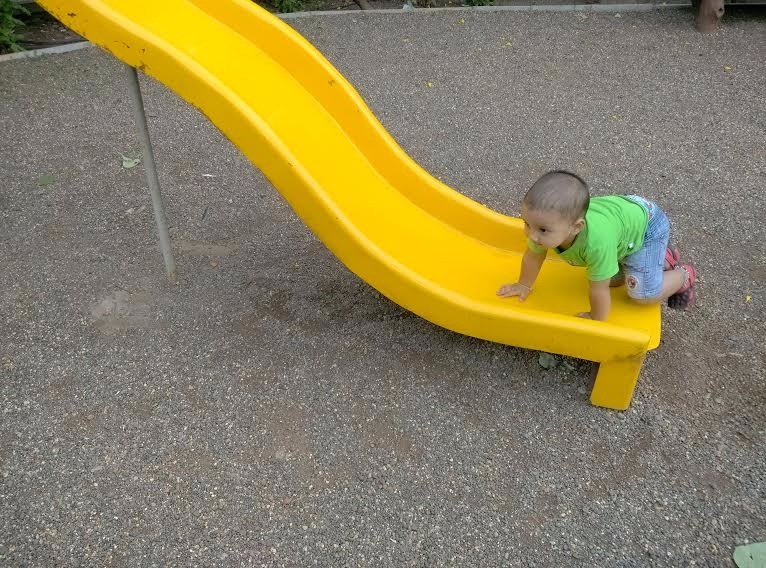
Developing Pre Writing Skills For Young Toddlers – 12 to 30 months
17 Mar 2017 | 5 min Read
Kuhoo Gupta (The K Junction)
Author | 101 Articles
What are pre-writing skills?
To put it simply, these are the skills that children need to develop, to be able to write. For example – holding a pencil, using a pencil to move around on the paper, ability to draw something, copy or colour it, ability to draw different lines, patterns, shapes etc. The skills encompass; hand and finger strength, directional movement, hand position, pencil grip, proper usage of large muscles like elbow and shoulder, proper usage of small muscles like wrist and fingers, hand-eye coordination, bilateral integration, object manipulation and so much more!
The best place to start prewriting activities is your home. You really do not need to invest in expensive material to develop the mentioned skills. As complex as they sound, the skills are not very difficult to master. Provided you give the much needed exposure and stimulus to your child.
Here are some prewriting montessori activities that you can do with young toddlers (12 to 30 months)
Scribbling: Random scribbling with no end product to be expected. It should be more of a free play at this age. It helps in hand-eye coordination, pencil grasp, elbow and shoulder muscles strength and hand and finger strength.

Posting Activity: Take a cardboard box, cut slits into it and give some tokens (coins/popsicle stick/wooden sticks, straws etc) to your child to post into it. Initially you can start with just one slit and then graduate to multiple slits with different alignments. You can call it a letter box or a money box. It helps in concentration, hand-eye coordination and fine motor skills.

Blocks: Manipulating the blocks of various shapes and sizes will enable them to develop a right grip for the future. Again, this should be a free play session which will help fuel the creativity of your child.

Spooning: The most simple of the practical life works – give your child two containers and some stuff to transfer using a spoon, like puffed rice, rajma beans, rice etc. The very simple act of using a spoon which looks simple to adults holds a very important place in a child’s skill set. Letting them self feed is also a great way to practice spooning.

Puzzles: Starting from simple knobbed puzzles to two or three piece wooden or cardboard puzzles to jigsaw puzzles; it is a great way to strengthen fine motor skills and boost logic and problem solving skills.
Pouring: Again a simple practical life activity. Letting them pour stuff from one container to other boosts their concentration, hand-eye coordination and hand and finger strength. You can start with dry pouring like beans or puffed rice and when it is mastered, you can try wet pouring (water or juice).

Painting: It is one of the best ways to let out the emotions and expressions of the child. It boosts confidence and creativity. Having art projects with different mediums helps them with the grip and improves fine motor skills.

Tongs: Get hold of small sized tongs from a local utensils shop (may be those used for salads) and give it to your child to pick up things like pom poms or small tomato or a block. This helps them to develop the strength and control of hand and finger muscles needed for writing in the future.
Clothespin: Pressing and releasing the clothespin is simple for us but it requires a decently good effort from a toddler. Ask your child to put the clothespin on cardboards or baskets. This again is good for finger strength.
Rolling chapaati: Seek the help of your toddler while in the kitchen. The action of using a rolling pin is good for strengthening those small muscles, helps in various wrist movements and is a great life skill to have.
Dropper: Preserve the droppers from the discarded medicines and your child can have lots of fun using it while playing with water. Who doesn’t enjoy playing with water, specially when colors are involved! So let your child explore color mixing or transferring water from one container to another using a dropper. Pinching and releasing actions are a great opportunity to develop their fine motor skills.
Using a Sponge: Squeezing the sponge and releasing water out of it is again a great activity to developing finger strength. You can either involve your child in cleaning chores while using the sponge or just present the sponge for a water transferring activity only.
Apart from these indoor activities, I cannot stress enough on the importance of outdoors! Gross motor skills are absolutely as important as fine motor skills. A healthy and fit body facilitates everything else!
I hope these simple ideas resonated with you and you all understand the importance of such simple activities as far as prewriting is concerned. So ladies, do not wait till the school age, start preparing your child now because all these activities not only help with pre-writing but so many other development areas too!
Explore the entire collection of articles:Toddler’s Learning
If you are reading this article on our website and have an Android phone, please download our APP here for a more personalised experience based on your lifestage.
A


Suggestions offered by doctors on BabyChakra are of advisory nature i.e., for educational and informational purposes only. Content posted on, created for, or compiled by BabyChakra is not intended or designed to replace your doctor's independent judgment about any symptom, condition, or the appropriateness or risks of a procedure or treatment for a given person.
